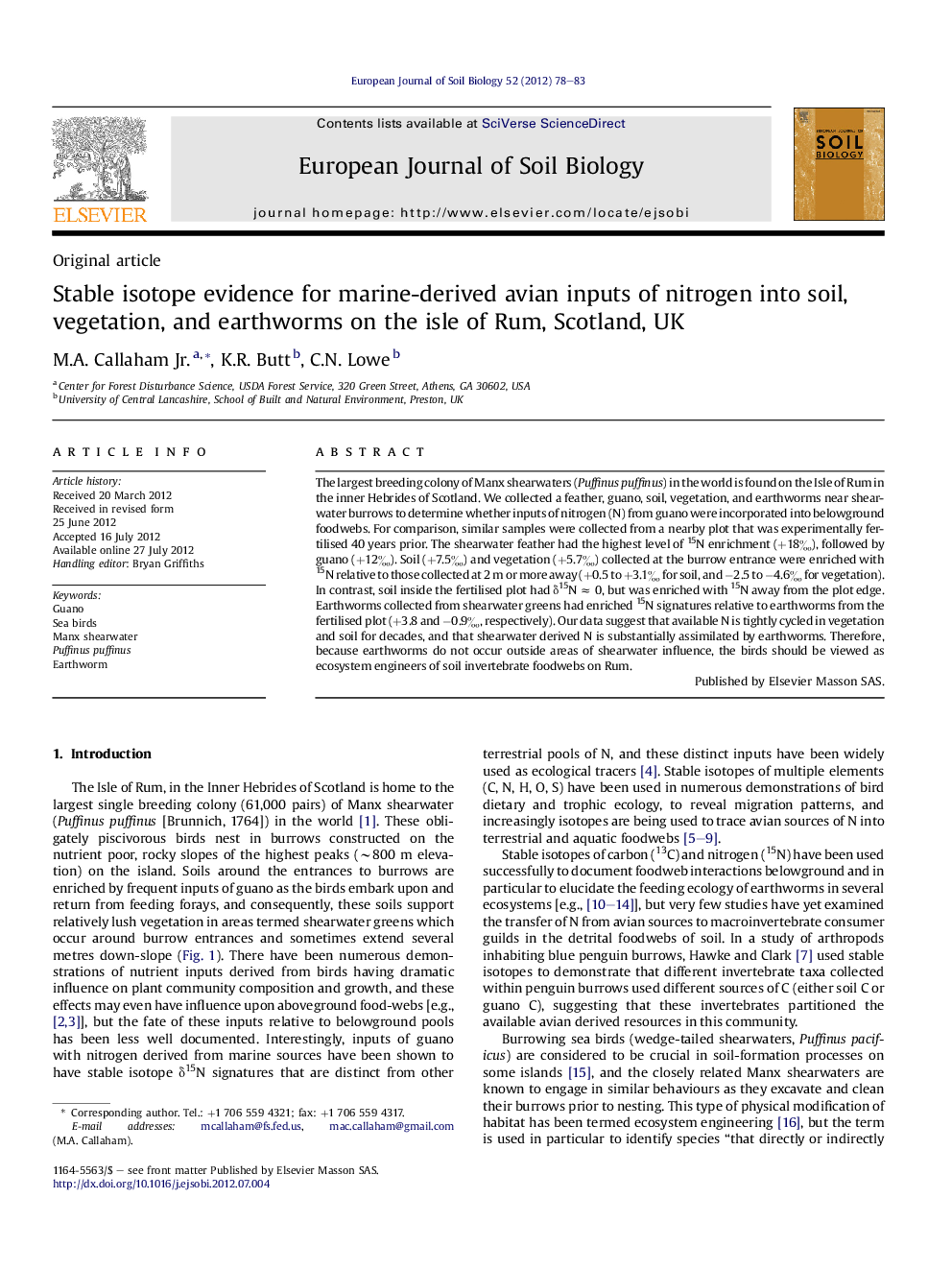| Article ID | Journal | Published Year | Pages | File Type |
|---|---|---|---|---|
| 4392063 | European Journal of Soil Biology | 2012 | 6 Pages |
The largest breeding colony of Manx shearwaters (Puffinus puffinus) in the world is found on the Isle of Rum in the inner Hebrides of Scotland. We collected a feather, guano, soil, vegetation, and earthworms near shearwater burrows to determine whether inputs of nitrogen (N) from guano were incorporated into belowground foodwebs. For comparison, similar samples were collected from a nearby plot that was experimentally fertilised 40 years prior. The shearwater feather had the highest level of 15N enrichment (+18‰), followed by guano (+12‰). Soil (+7.5‰) and vegetation (+5.7‰) collected at the burrow entrance were enriched with 15N relative to those collected at 2 m or more away (+0.5 to +3.1‰ for soil, and −2.5 to −4.6‰ for vegetation). In contrast, soil inside the fertilised plot had δ15N ≈ 0, but was enriched with 15N away from the plot edge. Earthworms collected from shearwater greens had enriched 15N signatures relative to earthworms from the fertilised plot (+3.8 and −0.9‰, respectively). Our data suggest that available N is tightly cycled in vegetation and soil for decades, and that shearwater derived N is substantially assimilated by earthworms. Therefore, because earthworms do not occur outside areas of shearwater influence, the birds should be viewed as ecosystem engineers of soil invertebrate foodwebs on Rum.
► Manx shearwater guano is a source of nutrients for infertile soils on Isle of Rum. ► Earthworms inhabit shearwater greens, and assimilate guano-derived 15N. ► Seabird N is assimilated into belowground food webs. ► Manx shearwaters are ecosystem engineers of soil food webs on Rum.
